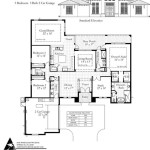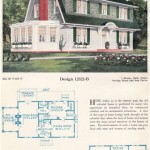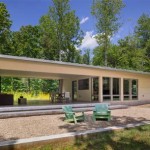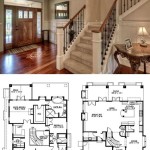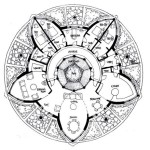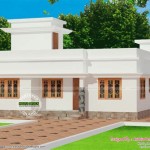Aladdin House Plans: A Legacy of Affordable Housing and American Innovation
Aladdin Homes, a division of the Michigan-based Aladdin Company, holds a significant place in the history of American housing. From the early 20th century through the mid-20th century, Aladdin offered a unique approach to homeownership: precut, mail-order homes delivered directly to the buyer. This system, facilitated by detailed house plans, accessible catalogs, and the expanding railway network, democratized homeownership and left a lasting impact on architectural styles and community development across the United States.
The company's innovative approach centralized the cutting and preparation of building materials in their Bay City, Michigan facility. This process reduced waste, minimized on-site labor costs, and ensured a standardized quality control previously unattainable for many prospective homeowners. Aladdin Homes were not kit homes in the modern sense, but rather precut lumber and materials delivered with detailed instructions, allowing individuals to construct a house to their specifications, guided by the comprehensive Aladdin house plans.
The Aladdin System: Precut Lumber and Detailed Designs
The core of Aladdin's success lay in its precut lumber system. Instead of receiving raw materials, buyers were supplied with lumber that had been precisely cut and labeled according to the specifications of their chosen house plan. This revolutionized the building process. The reduction in on-site cutting and waste translated to significant cost savings for the homeowner, as well as a reduction in construction time. The precut system also meant that less skilled labor was required, making home construction more accessible to a broader population.
The efficacy of the precut method was reliant on the accuracy and clarity of the accompanying Aladdin house plans. These plans weren't merely blueprints; they were comprehensive guides covering every aspect of construction, from foundation laying to roof installation. The level of detail within these plans meant that individuals with basic carpentry skills, or even the willingness to learn, could successfully erect their own Aladdin home. The plans included detailed elevations, floor plans, cross-sections, and even specific instructions on how to assemble individual components. The thoroughness of the plans minimized errors and ensured that the finished product closely resembled the model depicted in the Aladdin catalog.
Aladdin also developed a sophisticated system of lumber grading and quality control. The company sourced high-quality lumber, often from the forests of the Pacific Northwest, and subjected it to rigorous inspection before cutting. This commitment to quality ensured the durability and longevity of Aladdin homes, even in diverse climate conditions. The detailed plans and quality materials combined to create a system where even inexperienced builders could achieve professional results, contributing to the widespread adoption of Aladdin Homes across the country.
Affordability and Accessibility: Democratizing Homeownership
One of the primary factors driving Aladdin's popularity was its commitment to affordability. By streamlining the construction process and eliminating the middlemen involved in traditional homebuilding, Aladdin was able to offer homes at significantly lower prices than comparable site-built houses. This affordability made homeownership accessible to a wider range of individuals and families, particularly those of modest means. The availability of financing options, including mortgages offered by Aladdin itself, further facilitated the dream of homeownership.
The mail-order nature of Aladdin Homes also contributed to their accessibility. Customers could browse the Aladdin catalog, select a house plan that met their needs and budget, and place their order through the mail. The precut lumber and materials would then be shipped directly to their nearest railway depot, eliminating the need to source materials locally and navigate complex supply chains. This was particularly beneficial for individuals living in rural areas or small towns where access to building supplies and skilled labor was limited. The ease of ordering and delivery made Aladdin Homes a viable option for those who might otherwise have been excluded from the housing market.
Aladdin's catalog played a crucial role in showcasing the diversity of house plans available. From modest bungalows to larger multi-story homes, the catalog featured a wide range of architectural styles and sizes to appeal to different tastes and budgets. The catalogs were meticulously designed, featuring detailed illustrations and descriptions of each home, as well as information on pricing, materials, and financing options. The catalog served as a powerful marketing tool, attracting customers from across the country and solidifying Aladdin's position as a leader in the mail-order home industry. The transparent pricing and detailed information offered in the catalog instilled consumer confidence and further fueled the company's growth.
Architectural Styles and Lasting Impact
Aladdin Homes offered a diverse range of architectural styles, reflecting the prevailing trends of the early and mid-20th century. Bungalows, with their emphasis on simple design and affordability, were particularly popular. These single-story homes often featured large porches, open floor plans, and Craftsman-style details. Other popular styles included Tudors, Colonials, and Cape Cods, reflecting a desire for more traditional and formal housing options. The availability of these diverse styles allowed homeowners to choose a house that suited their personal preferences and the character of their community.
The impact of Aladdin Homes on American communities is undeniable. Thousands of Aladdin Homes were built across the country, and many of these homes still stand today as testaments to the quality of the materials and the efficacy of the construction system. The widespread adoption of Aladdin Homes led to the development of entire neighborhoods characterized by similar architectural styles and building techniques. These neighborhoods often exhibit a cohesive and harmonious aesthetic, reflecting the influence of Aladdin's standardized designs and construction methods.
Beyond their architectural influence, Aladdin Homes also contributed to the standardization of building practices and the adoption of modern construction techniques. The precut lumber system, which Aladdin pioneered, became a standard practice in the homebuilding industry. Aladdin's emphasis on detailed plans and clear instructions also helped to elevate the standards of construction documentation and communication. The company's legacy extends beyond the individual homes it produced, shaping the evolution of homebuilding and contributing to the development of more efficient and affordable housing solutions. The availability of Aladdin house plans continues to be valuable to homeowners looking to restore or renovate these historical homes, ensuring that their architectural heritage is preserved for future generations.

Aladdin Homes Rockport 1953 Vintage House Plans Old Houses For

1920 House Plans Aladdin Kit Houses Yale American Vernacular With Free Classic Queen Anne Elements

1951 Del Mar Aladdin Readi Cut Homes Vintage House Plans Old Houses For

Tiny House Plan Clipped Gabled Cottage Aladdin Kit The Poplar

Foundations Of Construction Aladdin Coured Up Homes Factory Built Kits Starting A Century Ago Ontario News

Aladdin Houses Built In A Day Rare Books Collection Utsa Digital Collections

An Aladdin House Clarke Historical Library Central Michigan University

Die Brunswick Aladdin Readi Cut Häuser 1920 Picryl Public Domain Suche

The Bristol Aladdin 1953 Minimal Traditional Vintage House Plans Sims

1953 Aladdin Kit Homes Old Houses For

